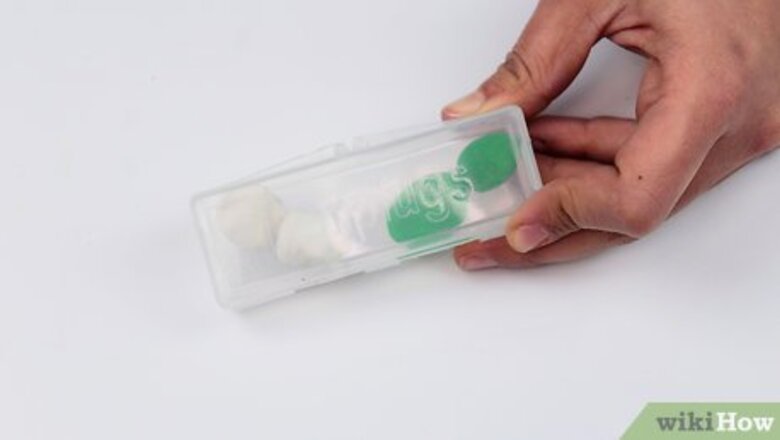
views
Making Custom Earplugs from a Kit
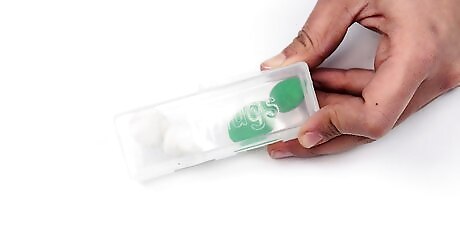
Purchase a custom molded earplug kit. Custom molded earplug kits are available that allow you to create your own set of custom molded earplugs at home. These custom molded earplugs can be much more effective and comfortable than other types of earplugs. You can purchase custom molded earplug kits online and in some stores.

Separate the materials. The custom molded earplug kit should come with two different types of materials. These materials should be two different colors and packaged separately within the kit. Take each of the materials and break each piece into two equal sized pieces.
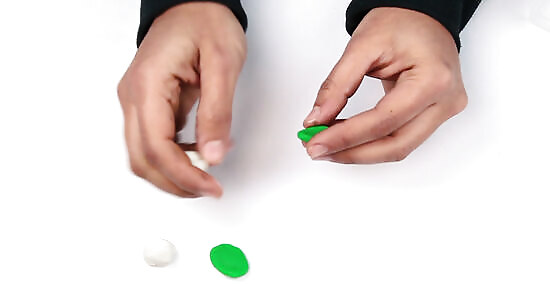
Mix the different color materials together. Next, you will need to mix the different color materials to create the earplug material. Take one piece of each color of the foam materials. Squeeze and knead the foam materials together for a few minutes so that they combine to create one uniform color.

Press the foam into your ears. After the materials are well-combined, press one piece of the earplug material into each of your ears. Press the material into your ear enough to block the sound, similar to how you would wear other types of earplugs. The plugs should feel comfortable and not too tight or loose.
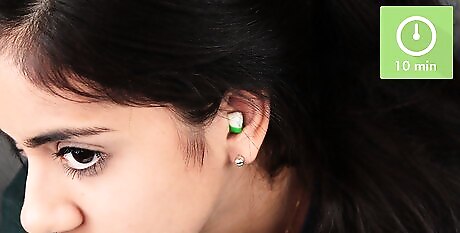
Leave the earplugs in for 10 minutes. Allow the plugs to stay in your ears for 10 minutes. During this time, the earplug materials will dry and keep their shape. When you remove them from your ears, you will have your own pair of custom molded earplugs.
Making Toilet Paper Earplugs
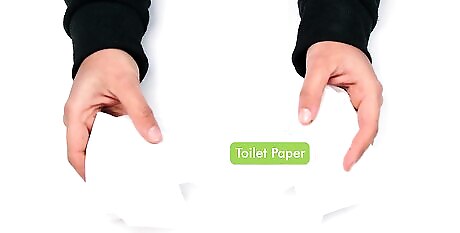
Wad up some toilet paper. Get two clean, dry pieces of toilet paper and wad them up so that they look like two small balls. The wads should be big enough to fill your ear canal, but not so big that they will not fit inside of your ear canal. Keep in mind that you should only use toilet paper earplugs if you have no other option. Do not use toilet paper earplugs on a regular basis because pieces of the toilet paper may stick in your ears and cause an infection. Only use toilet paper earplugs as a short-term fix, such as when you are at a concert. Do not sleep with toilet paper earplugs in your ears.
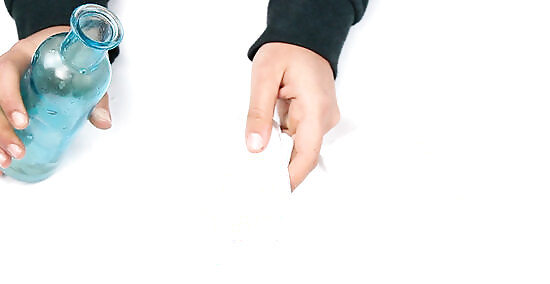
Moisten the toilet paper wads. Hold each of your wads of toilet paper under a low stream of water for a few seconds to moisten it throughout. Then squeeze out all of the excess water so that the wads just feel damp. If the wads shrink from the water, you may need to add a little more toilet paper to each wad. Wetting the toilet paper is important because dry toilet paper will not block noise as well. Dry toilet paper fibers may also stick in your ears and this can cause an infection.
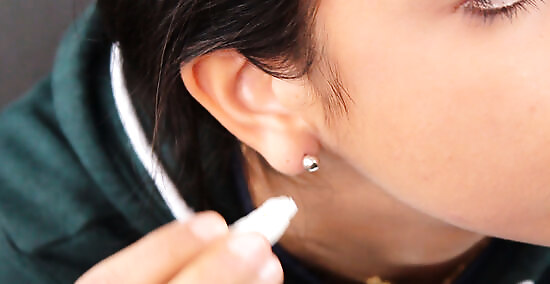
Put the toilet paper wads into your ears. Stick the toilet paper wads into your ear canals to see if they fit. If the wads do not fit or if the fit is uncomfortable, then you may need to adjust them by adding or removing some of the toilet paper. Make sure that you reshape the wads before you try to put them into your ear canals again.
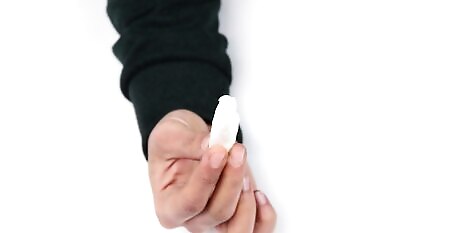
Dispose of the toilet paper earplugs when you remove them. Do not reuse the toilet paper earplugs at all or you may develop an ear infection. Throw them away right after you take them out of your ears. If you need another pair of earplugs, use two new, clean pieces of toilet paper.
Making Cotton Earplugs

Purchase a bag of cotton balls. These come in multiple sizes, but you can generally get a bag of 100 cotton balls for less than $5.00. You can find them in the health care section of your grocery store or local pharmacy. Choose regular size cotton balls rather than jumbo size ones. You can purchase sterile or non-sterile cotton balls since the cotton balls will just be wrapped in plastic anyways.
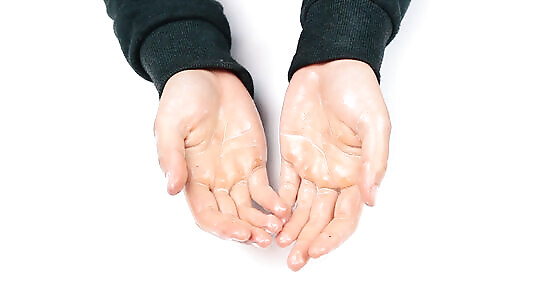
Wash your hands. It is important to make sure you are handling the cotton balls with clean hands as this will reduce the chance of infection in the ear canal. Use an antibacterial soap and wash with warm water. Dry with a clean hand towel.

Break off a small, dime-sized piece of a cotton ball. Roll the cotton ball piece into a round ball. The ball should fit comfortably inside of your ear canal.
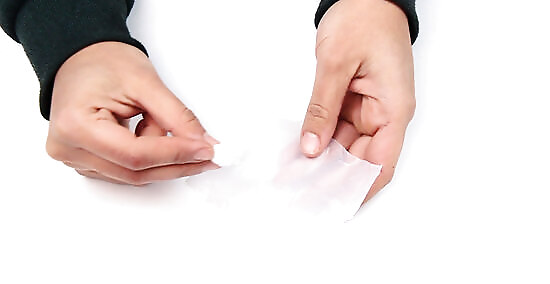
Wrap the cotton ball in a protective plastic wrap. Use a plastic wrap that is flexible and not sticky, such as some plain plastic wrap. Cut the plastic wrap into a piece large enough so it can wrap around the cotton ball, but so it leaves a little tail. Wrapping the cotton in plastic wrap will prevent harmful fibers from getting into your sensitive ear canal and reduce the possibility of infection or injury from the cotton ball. Wrap the plastic wrap so it tightly covers the ball, but not so it crushes it into a flat shape. If you use scissors to cut the plastic wrap, make sure they are clean. You can wash them in an antibacterial soap or dish soap with a clean sponge.
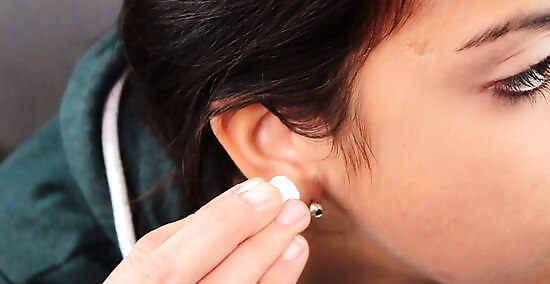
Test the fit of the ear plug. Gently insert the wrapped cotton ball into your ear canal to assess its fit. Just pay attention to how comfortable it feels inside of your ear. The ear plug should feel snug, but not like it is cramming into your ear canal or stretching it out. If it feels loose, then you will need to adjust the size as well. You can add additional material from the cotton ball to the ear plug or you can take out part of the cotton if it is too large. Be sure not to cram the ear plug too far into the ear; this could cause damage to the ear canal. The ear plug should rest just at the entrance to the ear canal, not beyond it.

Tie the end of the plastic wrap. After you have tested the ear plug and have adjusted its size so it fits correctly, take a small rubber band and wind it around the tail of the plastic wrap. Make sure it is tightly closed around the wrap. Take your pair of scissors and snip off the small tail of the plastic wrap. Be sure to leave a little bit hanging out of your ear so that it will be easy for you to remove the earplug.
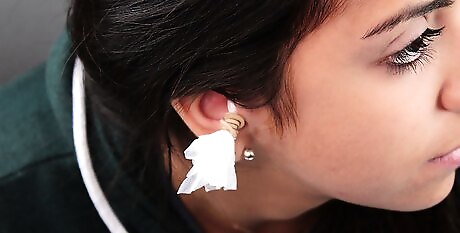
Test out your ear plugs. If you plan to use your ear plugs during the day, try wearing them in a busy cafe or restaurant. This will let you know how effective the earplugs are at reducing noise. If you plan to sleep in the ear plugs, take a nap to test them out. If you sleep on your side, you might need to adjust the size of the plug for the ear that you keep pressed to the pillow.

Replace the earplugs on a weekly basis. Because the material of the ear plugs is cotton, it will not hold up against a thorough cleaning. You should replace the cotton ball ear plugs every five to seven days to prevent bacteria from ear wax or oil building up in your ear canal. This could lead to a painful infection. Store your ear plugs in a sanitary container, such as a clean plastic sandwich bag.













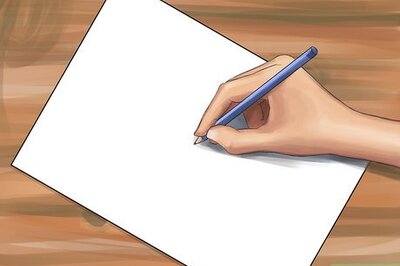


Comments
0 comment